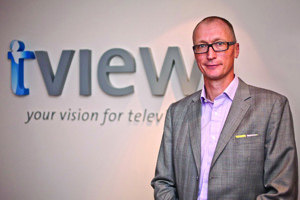A six-month audit of tviews performance includes key recommendations on how to ensure the UAEs TV audience measurement is on par with global industry standards. Chris OHearn takes us through the recommendations Standards the broadcast engineering world is full of them, with good reason. They ensure that 1080p is the same, whether youre in Dubai or Dublin, […]
A six-month audit of tviews performance includes key recommendations on how to ensure the UAEs TV audience measurement is on par with global industry standards. Chris OHearn takes us through the recommendations
 Standards
the broadcast engineering world is full of them, with good reason. They ensure that 1080p is the same, whether youre in Dubai or Dublin, that XML data is readable in Berlin or Beirut. It avoids the possibility of human error and interpretation.
Standards
the broadcast engineering world is full of them, with good reason. They ensure that 1080p is the same, whether youre in Dubai or Dublin, that XML data is readable in Berlin or Beirut. It avoids the possibility of human error and interpretation.
But when we are dealing with humans, as in the case of audience measurement, standards become more difficult as we are seeing from the results of a full external audit of EMMCs tview people meter system.
Regardless of results, the audit itself is a positive step, commissioned jointly by the EMMC shareholders and by the Choueiri Group on behalf of MBC and DMI. The most basic step in setting an advertising currency is to establish credibility, co-operation and trust and this is not to be taken for granted.
On that score, the audit was resoundingly positive finding that the system was fully transparent and there was no reason to doubt its integrity. Everyone involved recognises that people meters are the way forward for this market.
There were clear directions from the auditors Paris-based CESP. In general, they found that most technical aspects of the system had been planned and implemented well. Fieldwork, staff, panel management and data processing were all satisfactory. But the three main areas in need of improvement are the ones that arise from regional characteristics.
Survey selection
First, there is the need to have a completely random selection for what we call the Establishment Survey an initial survey to gather demographic data before making up the viewer panel. In theory, everyone in the country should have exactly the same chance of being approached.
The global standard is a random household survey. Thats easier to achieve in countries with postal address systems, or where there are few access problems to apartment blocks and residential compounds. In the UAE, we decided this was not possible and used a random street intercept method. This was partly also because the length of the survey, at around 40 minutes, traditionally requires face-to-face contact.
Theres another regional issue at play here, which is the lack of census data. In most countries, the census determines the shape of the panel but we dont have accurate data here, so the Establishment Survey takes that role as well, adding to the importance.
CESP thinks a random phone dialing method would be more acceptable but it is important to be clear that they are not saying the current panel is unrepresentative or should be scrapped. The current methodology isnt wrong, they simply believe that a phone-based method would be more probabilistic.
Even that is not without issues, such as gender bias women are less likely to answer or how to account for multiple phone ownership, which increases the chances of wealthier people being contacted. These have to be accounted for, just as the questionnaire has to be condensed, and we will pilot this method and review the results with CES in the coming weeks.
Compliance
The second, and more important issue, was compliance. People meters rely on the individuals watching TV at home to register their viewing using a small device like a TV remote.
If they dont comply, then the household viewing is recorded, but we dont know how many individuals were watching or their demographics, losing a key feature of people meter data.
The worst group are UAE nationals, which is even more unfortunate given that they are the smallest sample. Arab expats were also poor at compliance, together hovering around 50%. It doesnt mean the data is wrong, just that it is more volatile and less robust than we would like.
Asians generally comply indeed if this was an Asian audience measurement system we would have fewer problems.
Solving this is not easy. International standards are for 90% compliance and, personally, I doubt we will ever reach this, though we will try.
For example, we offer incentives to panelists. But how can we incentivise a well-off Emirati family in a six-bedroom villa, in the same way as a Keralite labourer in a bachelor household with six others? In any case, the evidence is that incentives have only a short-term effect.
Motivation is a key driver, but again the diversity of our population makes this difficult. Emiratis may be moved by the fact that this initiative is supported by the Federal Cabinet, but others may find the hint of government involvement somewhat alarming.
This is an area, which will require many different, targeted approaches and a lot of trial and error.
Privacy
Finally the other area for improvement is the number of unmonitored screens arising from strong resistance to placing people meters on TVs in the bedroom. Often we are told, there is no screen there, and our technicians cant really go around opening doors.
This is perhaps a regional cultural issue based on privacy sensitivities. On one level it is easy to say that anyone unwilling to have a meter in the bedroom should simply be excluded from the panel. But lets assume those are more conservative people, then one has to wonder if the viewing is properly representative if the panel is made up of more liberal families.
And it isnt as easy as just saying we should use another technology. For example, recent trials in audience measurement have been around smartphones, and while promising it has also been noted that phones are regarded as a very personal device by their users and may face even more resistance to being monitored.












































































